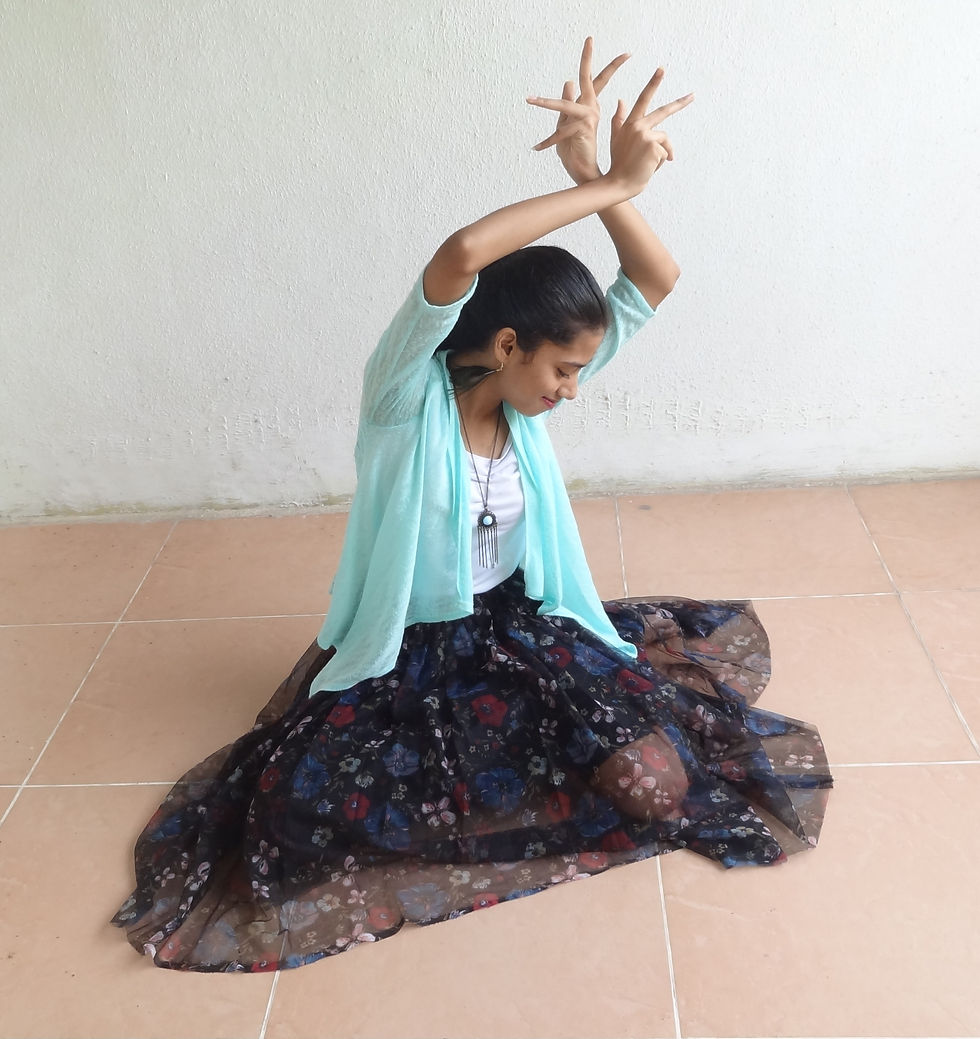Nritya Kala
- Sanika Bhosale

- Jun 15, 2021
- 3 min read
“Nritya”, in simple words means ‘dance’ and “Kala” means ‘art’. So as the name suggests, it’s already clear what my topic will be about. After analyzing and coming up with a ton lot of ideas for naming the subject that I want to talk about, I thought to keep the topic’s name simple and short. And so here I am with my topic.

To start with, I would like to say that dancing has always been my favorite topic to talk about. It is my passion. For me dancing is something where I can express my emotions, just like musicians express their emotions through their music and songs. And I’m sure this is the case with most of them who describe dancing as their passion and daily motif (or if that’s what you call it).
"Dance is the hidden language of soul."
I have always been passionate about all dance forms, but there’s one in particular that I have spent almost 14 - 15 years learning the “Kala” of “Natya”.
Natya:
Natya, which also means “dance” was the other name for “Bharatanatyam”, in ancient times. Now, without going into to the depth of where the dance originated from, here’s a short and simple description of this dance form. Bharatanatyam is a type of Indian classical dance form which was practiced only by the girls dedicated to perform before their kings, in olden days. This dance form was first introduced by Dr. Rukmani Devi Arundale as an art form to everybody.

I reminisce about the days when I used to go to my dance class and practice Bharatanatyam. We were taught to do the basic and the most important thing before and after Bharatnatyam, that is Namaskaram, a prayer. Namaskaram refers to the proper way of offering prayer and greetings and seeking blessings to God, Guru and the audience. After doing the Namaskaram, we used to continue with our dance. Every weekend used to be exciting for me, as I got to learn new mudras, also known as hand gestures, different Bharatanatyam postures and other postures including the feet work, known as adavu.

Performing on stage and taking part in different dance competitions are things that have always given me enthusiasm. It is just more than a feeling, it changes me inside-out. It over comes my nervousness and gives me confidence at the same time. Or at least, if that’s how it works for me.

Dance is not only an art form for expressing ideas or emotions, but it is an art form that “gives inarticulate a voice”.
Have you ever heard of dance psychology? Dance psychology is the study of dance and dancers from a scientific and a psychological perspective. Let’s dive into the scientific reasons as to why one should practice dance, even if they think they are not good at it.
According to the psychological studies, researchers have proved dancing to be good for mental health and emotional well-being. Dancing helps alleviate the symptoms of depression, as it focuses more on body movement and emotional expressions. It has many positive effects on the brain. In fact, long-term dance practice positively affects brain activity. The combination of exercise and sensory enrichment during a dance can improve the brain’s ability to form new neural connections to change and adapt, popularly known as neuroplasticity. Hence, dancing can be used as a mediation for many neurological diseases, like stroke, Parkinson’s disease, and cerebral palsy.

Moreover, dancing can make people happier and improve their moods and increase their energy. In other words, people are a bit more vibrant than they were before they practiced dance. So even if people practice dance for a week, there will be an increase in their happiness.
Dancing also helps boost memory and keeps cerebral health in good shape and improves dementia. If people with messed up sleep schedule practice dance, their body will feel more loose and relaxed and hence they will be able to sleep better at night, having done some exercise during the day.
In conclusion, practicing dance might be a therapy for you, as it helps reduce stress, helps develop new neural connections, increases levels of the ‘feel-good’ hormone serotonin, long term memory and spatial recognition. To add up, dancing may make you smarter. Several evidences show that bracing one’s mind by dancing can prevent Alzheimer's disease.

This is the “Kala” of “Nritya”, more like, “The Art of Dance”. And hence, these are the reasons why I am passionate about dance. It helps me reduce my stress, helps me relax and increases my mood and energy level. Every time I dance, it feels like a fresh new start.


Comments